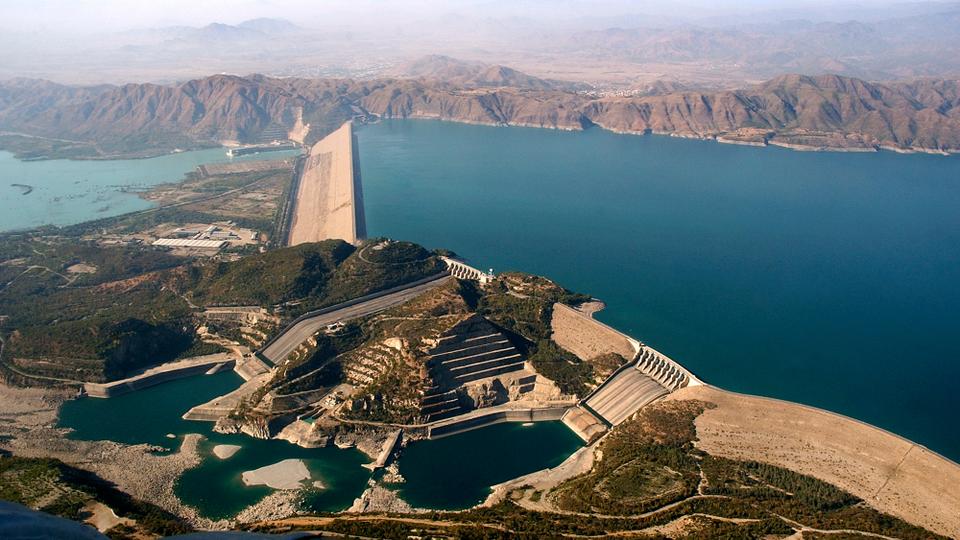
Pakistan’s biggest Tarbela Dam is observed from a helicopter in Tarbela, Pakistan, November 18, 2005. (AP)
Mix of renewables to include mainly wind and solar power, but also geothermal, tidal, wave and biomass energy, according to Syed Aqeel Hussain Jafry, policy director for the government’s Alternative Energy Development Board.
Pakistan has set in motion a plan this week to boost the share of its electric power that comes from renewables to 30 percent by 2030, up from about 4 percent today.
“The targets in the newly announced policy are a 20 percent share of renewables in installed capacity of Pakistan’s power mix by 2025 and 30 percent by 2030,” said Syed Aqeel Hussain Jafry, policy director for the government’s Alternative Energy Development Board.
That will include mainly wind and solar power, but also geothermal, tidal, wave and biomass energy, he said.
With boosts in hydropower capacity expected as well, the shift could bring the share of clean energy in Pakistan’s electricity mix to 65 percent by 2030, said Nadeem Babar, head of a task force on energy reforms in Pakistan.
But the legislation leaves in place plans to build seven more coal-fired power plants as part of the second phase of the China Pakistan Economic Corridor project – something that could impede scale-up of renewable power, warned Zeeshan Ashfaq, a solar and wind energy developer in Pakistan.
“A coal pipeline of around 4,000-5,000 megawatts will not provide much space for renewables,” said Ashfaq, managing director of SOWITEC (Solar Wind Technology) Pakistan.
The new national renewables policy, approved by the prime minister’s cabinet last December, was delayed by the coronavirus pandemic and as negotiators tried to resolve disputes with individual provinces.
But Asad Umar, federal minister for planning and development, said on social media the resolution of those disputes now opened the way to “unleash Pakistan’s full potential” for renewables.
Reorganised sector
Hobbled by decades of energy shortages, successive Pakistani governments have pursued private sector investment in power production, offering lucrative returns backed by sovereign guarantees.
Up until 2017, prolonged power outages hit the country’s industrial production.
Power cuts and scheduled outages, known as load shedding, in urban areas were sharply reduced from about 12 hours a day previously to only occasional outages by mid 2018.
Despite the progress, seasonal production gaps and distribution woes remain.
New investment in renewable energy is also expected to come from private investors, with potential suppliers bidding in annual auctions and low-tariff proposals winning, said Nadeem Babar, chair of the energy task force and now special assistant to the prime minister.
Jafry, of the alternative energy board, said the policy represented a significant shift from the past, when investors approached the government with individual projects.


